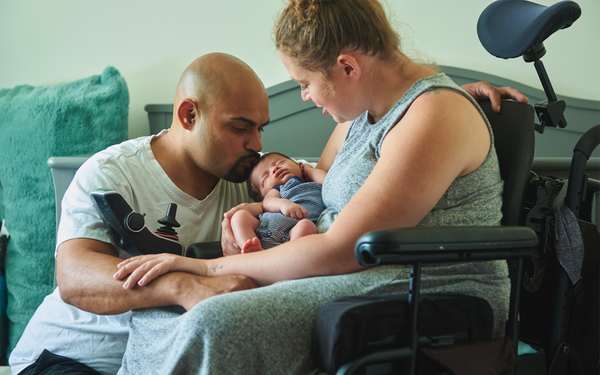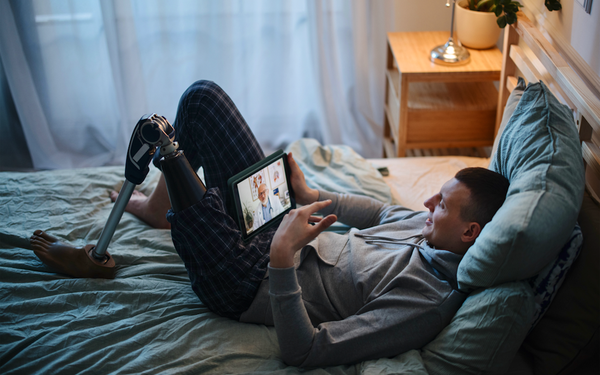Commentary
Getty Images Capture Landscape Of Healthcare Marketing
- by Les Luchter , Staff Writer, November 22, 2023
 Credit: Getty Images/Daniel Tardif/Photodisc
Credit: Getty Images/Daniel Tardif/PhotodiscFor Getty Images, whose library includes hundreds of millions of photos and videos, pictures can provide a snapshot into the state of healthcare marketing -- that is, pictures combined with data gleaned from ongoing consumer research of 10,000 people worldwide through MarketCast.
“We’re trying to find where there are gaps in the visual content that our healthcare customers are downloading from us and what consumers want to see in healthcare marketing,” Rebecca Rom-Frank, Getty senior creative researcher, tells Pharma & Health Insider. “We can then make recommendations not only to our own creators of what visuals to make, but also to our customers as to what kinds of visuals are going to resonate with their audiences.”
Healthcare companies search Getty’s stock library to download images and videos for use in everything from social media spots and TV campaigns to websites and reports. These downloads “can almost serve as a proxy for the visual landscape of healthcare marketing,” Rom-Frank says.
That landscape has changed tremendously since the onslaught of COVID. While 2020 brought what she calls an “exponential” increase in such images as personal protective equipment, masking and people doing things like yoga at home, healthcare downloads in 2023 reflect a long-term shift toward content like-home testing, fitness trackers and telemedicine.
Downloads of images showing telemedicine, in fact, are up 494% since 2019, reflecting the fact that before the pandemic, there were only a few telemedicine images “within the top 50,000 stills and videos that healthcare brands were using from us.” But the volume has stayed high even after the pandemic, representing about 2% of those top 50,000 downloads in 2022, Rom-Frank says.
Another long-term shift has been in downloads of images related to mental health -- up 72% from 2019 to 2022.
Getty’s research shows that Americans now rank mental health and wellbeing as a much higher priority than before the pandemic.
“Mental health issues that were maybe once seen as painful are starting to become a lot more visualized,” Rom-Frank adds.
“In the past, we would see a lot of images that showed someone being stressed, like clutching their head or sitting in a dark corner,“ she elaborates. Now, images increasingly represent mindfulness, such as “someone with their eyes closed surrounded by nature, or meditating in their bedroom. We are also seeing more images of talk therapy, like someone sitting in a therapist’s office, having an emotional conversation, or maybe holding hands with the healthcare provider.”
Mental health, though, is also an area where industry downloads fail to reflect what’s shown in Getty’s consumer research.
“Gen Z and millennials are struggling with mental health,” Rom-Frank explains, “but most of the mental wellbeing visuals being downloaded exclude these younger adults.”
Another demographic represented improperly is men. “Over a third of men are struggling with mental health and that number is a lot higher – almost half --for Gen Zers and millennials, but men are far less likely to be pictured discussing emotional issues. In fact, we found that at least one woman appears in 80% of all therapy images…That sets up a biased idea of who therapy is for, and who it can benefit.”

Credit: Getty Images/Anchly/E+
Other underrepresented groups in healthcare imagery, according to Rom-Frank, include:
Blacks. “Black people make up nearly 20% of healthcare workers, but in the digital content that healthcare brands are using, Black people make up only around 10% to 11% of healthcare workers shown.”
Disabled people. While the use of images showing the disabled – who are “more often seen in a healthcare context than not” – is growing, “We don’t see how things like telemedicine are allowing people with disabilities to get care that they need in a way that is more accessible.”
Also, Rom-Frank adds, “visuals are still very, very focused on the doctor-patient relationship. While that’s great to show care, what we're seeing a lot less of is how healthcare brands are offering tools to their customers that enable them to access trustworthy information over the course of the day.”
This relates to a low number of downloads showing such accessible healthcare as pop-up clinics and urgent care centers, as well as how new technology is pictured.
Three times as many healthcare visuals show technology as a “concept or innovation” over showing things like wearable technology or glucose monitors, Rom-Frank explains.
Finally, “images and the visualizations of the things that matter to consumers have not just gone back to what was popular in 2019,” Rom-Frank concludes. “There really has been a shift towards a bigger interest and emphasis on things like mental health, technology, access to these technologies, health equity, and more diversity and inclusion.”


